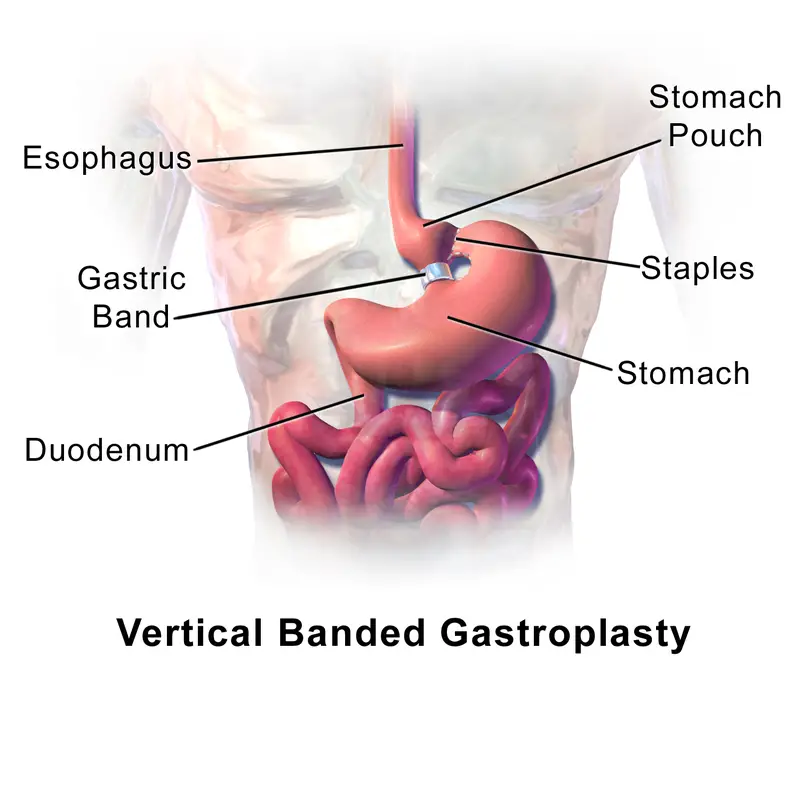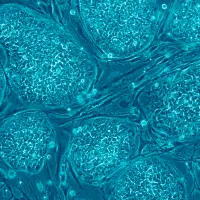Hello friends! Sleeve gastrectomy, Roux-en-Y gastric bypass, and adjustable gastric banding are three popular surgical interventions for weight loss. These procedures aim to reduce the size of the stomach or limit food intake to promote weight loss. This essay compares and contrasts these procedures in terms of anatomy, mechanisms, treatment approach, and prognosis. Let’s dive in!
Anatomy: Sleeve Gastrectomy vs Roux-en-Y Gastric Bypass vs Adjustable Gastric Banding

Sleeve gastrectomy, Roux-en-Y gastric bypass, and adjustable gastric banding differ in terms of their anatomical changes within the gastrointestinal tract.
I. Sleeve Gastrectomy: Sleeve gastrectomy involves removing a large portion of the stomach, leaving behind a narrow, sleeve-shaped pouch. The procedure is performed by stapling and dividing the stomach vertically, resulting in the removal of approximately 75% to 85% of the stomach’s outer curvature. The remaining stomach is reshaped into a smaller, tube-like structure. This reduction in stomach size restricts the amount of food that can be consumed and promotes weight loss.
II. Roux-en-Y Gastric Bypass: Roux-en-Y gastric bypass involves two major anatomical changes. Firstly, a small stomach pouch is created by stapling and dividing the upper part of the stomach, separating it from the lower portion. This pouch is typically limited to about 15 to 30 milliliters in capacity. Secondly, a section of the small intestine is divided and connected to the small stomach pouch. This bypasses a significant portion of the stomach and the upper part of the small intestine, redirecting food directly into the small intestine. The bypassed portion of the stomach and intestine continues to produce digestive juices but no longer comes into contact with food. This combination of restrictive and malabsorptive effects contributes to weight loss.
III. Adjustable Gastric Banding: Adjustable gastric banding involves placing an inflatable silicone band around the upper part of the stomach, creating a small pouch above the band. The band is connected to a port that is positioned beneath the skin. The band can be adjusted by adding or removing saline through the port, which tightens or loosens the band’s grip on the stomach. This adjustable mechanism allows for personalized restriction of food intake. Unlike sleeve gastrectomy and Roux-en-Y gastric bypass, adjustable gastric banding does not involve the removal or alteration of any part of the stomach or intestines.
Mechanisms: Sleeve Gastrectomy vs Roux-en-Y Gastric Bypass vs Adjustable Gastric Banding
Sleeve gastrectomy, Roux-en-Y gastric bypass, and adjustable gastric banding differ in their mechanisms of action for weight loss.
I. Sleeve Gastrectomy: Mechanism: Sleeve gastrectomy primarily works through restriction. By removing a large portion of the stomach, the procedure reduces its capacity. This restriction limits the amount of food that can be consumed at one time, leading to a feeling of fullness with smaller meals. Additionally, the surgery alters the production of certain hormones, including ghrelin, which helps regulate appetite. Ghrelin levels decrease after sleeve gastrectomy, reducing hunger and promoting satiety.

II. Roux-en-Y Gastric Bypass: Mechanism: Roux-en-Y gastric bypass combines both restrictive and malabsorptive mechanisms. The procedure involves creating a small stomach pouch by stapling and dividing the upper part of the stomach. This pouch restricts the amount of food that can be eaten, promoting portion control. Additionally, a section of the small intestine is rerouted and connected to the small stomach pouch. This bypasses a significant portion of the stomach and the upper part of the small intestine, reducing the absorption of nutrients and calories. The reduced absorption contributes to weight loss.
III. Adjustable Gastric Banding: Mechanism: Adjustable gastric banding primarily works through restriction. A silicone band is placed around the upper part of the stomach, creating a small pouch above the band. The band is adjustable and can be tightened or loosened by adding or removing saline through a port placed beneath the skin. When the band is tightened, it restricts the passage of food, leading to a feeling of fullness with smaller portions. The adjustable nature of the band allows for personalized adjustments to meet individual needs.
IV. Comparison of Mechanisms:
- Sleeve Gastrectomy vs. Roux-en-Y Gastric Bypass:
- Sleeve gastrectomy and Roux-en-Y gastric bypass both involve restriction, limiting food intake.
- Roux-en-Y gastric bypass additionally involves a malabsorptive mechanism, reducing nutrient absorption.
- Both procedures alter hormonal levels, decreasing appetite and promoting satiety.
- Roux-en-Y gastric bypass tends to result in more significant weight loss due to the combined restrictive and malabsorptive effects.
- Sleeve Gastrectomy vs. Adjustable Gastric Banding:
- Sleeve gastrectomy and adjustable gastric banding both rely on restriction to control food intake.
- Sleeve gastrectomy involves permanent anatomical changes, while adjustable gastric banding allows for band tightness adjustments.
- Sleeve gastrectomy typically leads to more substantial weight loss compared to adjustable gastric banding.
- Roux-en-Y Gastric Bypass vs. Adjustable Gastric Banding:
- Roux-en-Y gastric bypass combines restriction and malabsorption, while adjustable gastric banding focuses solely on restriction.
- Roux-en-Y gastric bypass often results in greater weight loss compared to adjustable gastric banding.
- Adjustable gastric banding carries a lower risk of malabsorption-related nutritional deficiencies compared to Roux-en-Y gastric bypass.
Treatment: Sleeve Gastrectomy vs Roux-en-Y Gastric Bypass vs Adjustable Gastric Banding
Sleeve gastrectomy, Roux-en-Y gastric bypass, and adjustable gastric banding differ in their treatment approaches for weight loss.
I. Sleeve Gastrectomy: Treatment Approach:
- Procedure: Sleeve gastrectomy involves removing a large portion of the stomach to create a smaller, sleeve-shaped pouch. The procedure is typically performed laparoscopically using minimally invasive techniques.
- Invasiveness: Sleeve gastrectomy is a permanent and irreversible procedure, as the portion of the stomach removed cannot be restored.
- Follow-up: After surgery, patients generally require regular follow-up visits to monitor progress, ensure proper healing, and receive guidance on lifestyle changes and dietary modifications.
II. Roux-en-Y Gastric Bypass: Treatment Approach:
- Procedure: Roux-en-Y gastric bypass involves creating a small stomach pouch and rerouting a section of the small intestine to bypass the stomach and upper small intestine. The procedure is commonly performed laparoscopically but may require open surgery in certain cases.
- Invasiveness: Roux-en-Y gastric bypass is a permanent procedure, and the anatomical changes cannot be reversed.
- Follow-up: Patients need regular follow-up visits to monitor their weight loss progress, nutritional status, and potential complications. Dietary guidelines and lifestyle modifications are typically provided to ensure long-term success.
III. Adjustable Gastric Banding: Treatment Approach:
- Procedure: Adjustable gastric banding involves placing an inflatable silicone band around the upper part of the stomach, creating a small pouch. The band is adjustable and can be tightened or loosened by adding or removing saline through a port placed beneath the skin.
- Invasiveness: Adjustable gastric banding is a reversible procedure as the band can be removed or adjusted as needed. It can be performed laparoscopically, requiring smaller incisions and potentially leading to faster recovery compared to more invasive procedures.
- Follow-up: Patients require regular follow-up visits for band adjustments, which are typically performed in the outpatient setting. Adjustments are made based on the patient’s weight loss progress and individual needs.

IV. Comparison of Treatment Approaches:
- Sleeve Gastrectomy vs. Roux-en-Y Gastric Bypass:
- Both procedures involve permanent anatomical changes.
- Sleeve gastrectomy is irreversible, while Roux-en-Y gastric bypass can be more technically challenging to reverse.
- Follow-up visits are necessary for monitoring progress and providing support in both procedures.
- Sleeve Gastrectomy vs. Adjustable Gastric Banding:
- Sleeve gastrectomy is a permanent procedure, while adjustable gastric banding is reversible.
- Regular follow-up visits are required for both procedures, but adjustable gastric banding necessitates additional visits for band adjustments.
- Roux-en-Y Gastric Bypass vs. Adjustable Gastric Banding:
- Both procedures involve permanent anatomical changes, but adjustable gastric banding allows for reversibility.
- Roux-en-Y gastric bypass typically requires closer monitoring due to the potential for malabsorption-related nutritional deficiencies.
- Adjustable gastric banding requires regular follow-up visits for adjustments and monitoring of weight loss progress.
Prognosis: Sleeve Gastrectomy vs Roux-en-Y Gastric Bypass vs Adjustable Gastric Banding
Sleeve gastrectomy, Roux-en-Y gastric bypass, and adjustable gastric banding differ in their long-term prognosis for weight loss and comorbidity resolution.
I. Sleeve Gastrectomy: Prognosis:
- Weight Loss: Sleeve gastrectomy has shown significant and sustained weight loss results. Studies indicate that patients can achieve weight loss of approximately 60% to 70% of their excess body weight. However, individual outcomes may vary.
- Comorbidity Resolution: Sleeve gastrectomy has been found to improve or resolve obesity-related comorbidities such as type 2 diabetes, hypertension, and sleep apnea. The degree of resolution depends on various factors, including pre-existing health conditions and adherence to lifestyle changes.
- Long-Term Maintenance: Long-term weight maintenance after sleeve gastrectomy requires ongoing commitment to healthy eating habits, regular physical activity, and behavioral changes. Adherence to postoperative guidelines and continued follow-up care contribute to favorable long-term outcomes.
II. Roux-en-Y Gastric Bypass: Prognosis:

- Weight Loss: Roux-en-Y gastric bypass has demonstrated superior weight loss compared to other bariatric procedures. Patients can expect to achieve weight loss of approximately 70% to 80% of their excess body weight in the long term. However, individual results may vary.
- Comorbidity Resolution: Roux-en-Y gastric bypass is associated with a high likelihood of resolving or improving obesity-related comorbidities, including type 2 diabetes, hypertension, and sleep apnea. The metabolic changes resulting from the procedure contribute to favorable outcomes.
- Long-Term Maintenance: Long-term success after Roux-en-Y gastric bypass depends on adherence to dietary and lifestyle modifications. Patients must follow specific dietary guidelines, take vitamin and mineral supplements, and maintain regular follow-up care for monitoring nutritional status and addressing potential complications.
III. Adjustable Gastric Banding: Prognosis:
- Weight Loss: Adjustable gastric banding generally results in more modest weight loss compared to sleeve gastrectomy and Roux-en-Y gastric bypass. Patients can expect to achieve weight loss of approximately 40% to 50% of their excess body weight in the long term.
- Comorbidity Resolution: Adjustable gastric banding has shown varying degrees of resolution or improvement in obesity-related comorbidities. However, the outcomes may be less significant compared to sleeve gastrectomy and Roux-en-Y gastric bypass.
- Long-Term Maintenance: Long-term success with adjustable gastric banding depends on regular follow-up visits for band adjustments, adherence to dietary guidelines, and lifestyle modifications. The need for ongoing monitoring and potential band-related complications can impact long-term outcomes.
IV. Comparison of Prognosis:
- Sleeve Gastrectomy vs. Roux-en-Y Gastric Bypass:
- Roux-en-Y gastric bypass tends to result in greater weight loss compared to sleeve gastrectomy.
- Both procedures offer a high likelihood of comorbidity resolution, with Roux-en-Y gastric bypass showing a slightly higher success rate.
- Long-term maintenance requires lifestyle modifications and ongoing follow-up care for both procedures.
- Sleeve Gastrectomy vs. Adjustable Gastric Banding:
- Sleeve gastrectomy generally leads to more substantial weight loss compared to adjustable gastric banding.
- Sleeve gastrectomy is associated with better resolution of obesity-related comorbidities compared to adjustable gastric banding.
- Long-term success requires adherence to postoperative guidelines and regular follow-up care for both procedures.
- Roux-en-Y Gastric Bypass vs. Adjustable Gastric Banding:
- Roux-en-Y gastric bypass typically results in greater weight loss compared to adjustable gastric banding.
- Roux-en-Y gastric bypass offers a higher likelihood of comorbidity resolution compared to adjustable gastric banding.
- Long-term maintenance requires ongoing adherence to dietary and lifestyle modifications for both procedures, with Roux-en-Y gastric bypass involving more intensive follow-up care.

Summary table: Sleeve Gastrectomy vs Roux-en-Y Gastric Bypass vs Adjustable Gastric Banding
| Sleeve Gastrectomy | Roux-en-Y Gastric Bypass | Adjustable Gastric Banding | |
|---|---|---|---|
| Anatomy | Removal of a large portion of the stomach, leaving behind a sleeve-shaped pouch | Creation of a small stomach pouch by stapling and rerouting of the small intestine | Placement of an adjustable silicone band around the upper part of the stomach |
| Mechanisms | Restriction of stomach size, hormonal changes leading to decreased appetite and increased satiety | Restriction of stomach size, malabsorption due to bypassing a section of the stomach and upper small intestine | Restriction of stomach size through adjustable band tightness |
| Treatment | Permanent procedure, typically performed laparoscopically | Permanent procedure, usually performed laparoscopically | Reversible procedure, often performed laparoscopically |
| Prognosis | Significant and sustained weight loss, improved metabolic profiles, comorbidity resolution | Greater weight loss compared to sleeve gastrectomy, improved metabolic profiles, comorbidity resolution | Modest weight loss compared to other procedures, variable comorbidity resolution |
| Follow-up | Regular follow-up visits for progress monitoring, dietary modifications | Regular follow-up visits for progress monitoring, nutritional monitoring, dietary modifications | Regular follow-up visits for band adjustments, dietary modifications |
| Risks | Surgical risks, potential nutritional deficiencies | Surgical risks, potential nutritional deficiencies | Band-related complications (e.g., slippage, erosion, infection) |
| Long-term | Requires ongoing commitment to healthy habits, lifestyle changes | Requires ongoing commitment to healthy habits, dietary modifications, lifestyle changes | Requires regular follow-up visits for band adjustments, potential complications monitoring |
Multiple Choice Practice Questions
Question 1: Which bariatric surgery procedure involves the removal of a portion of the stomach to create a smaller, banana-shaped stomach pouch?
A) Sleeve Gastrectomy B) Roux-en-Y Gastric Bypass C) Adjustable Gastric Banding D) Gastric Balloon
Question 2: What is the primary mechanism of weight loss in Sleeve Gastrectomy?
A) Restriction of food intake B) Malabsorption of nutrients C) Diversion of food through a bypassed segment D) Decreased hunger sensation
Question 3: Which procedure rearranges the digestive tract to create a small stomach pouch and a bypassed segment that connects to the small intestine?
A) Sleeve Gastrectomy B) Roux-en-Y Gastric Bypass C) Adjustable Gastric Banding D) Intragastric Balloon
Question 4: Which bariatric surgery procedure involves placing an inflatable band around the upper part of the stomach to restrict food intake?
A) Sleeve Gastrectomy B) Roux-en-Y Gastric Bypass C) Adjustable Gastric Banding D) Duodenal Switch
Question 5: Which procedure can lead to both restriction of food intake and changes in gut hormones affecting hunger and metabolism?
A) Sleeve Gastrectomy B) Roux-en-Y Gastric Bypass C) Adjustable Gastric Banding D) Vertical Banded Gastroplasty
Question 6: Which surgery is reversible and allows for adjustments to control the level of restriction?
A) Sleeve Gastrectomy B) Roux-en-Y Gastric Bypass C) Adjustable Gastric Banding D) Biliopancreatic Diversion
Question 7: In which procedure is the stomach stapled to create a small pouch and a connection made directly to the jejunum?
A) Sleeve Gastrectomy B) Roux-en-Y Gastric Bypass C) Adjustable Gastric Banding D) Gastric Plication
Question 8: Which surgery has the potential to result in greater and faster weight loss compared to the other procedures?
A) Sleeve Gastrectomy B) Roux-en-Y Gastric Bypass C) Adjustable Gastric Banding D) Intragastric Balloon
Question 9: Which procedure requires more long-term dietary and nutritional monitoring due to potential malabsorption?
A) Sleeve Gastrectomy B) Roux-en-Y Gastric Bypass C) Adjustable Gastric Banding D) Gastric Sleeve Plication
Question 10: What is a potential advantage of Adjustable Gastric Banding over other procedures?
A) Permanent alteration of the digestive tract B) High likelihood of rapid and significant weight loss C) Minimal risk of surgical complications D) Reversibility and adjustability of restriction
Answers and Explanations
Question 1: Which bariatric surgery procedure involves the removal of a portion of the stomach to create a smaller, banana-shaped stomach pouch?
Answer: A) Sleeve Gastrectomy
Explanation: Sleeve Gastrectomy involves the removal of approximately 75-85% of the stomach, leaving behind a smaller, tubular-shaped stomach pouch resembling a sleeve.
Question 2: What is the primary mechanism of weight loss in Sleeve Gastrectomy?
Answer: A) Restriction of food intake
Explanation: The primary mechanism of weight loss in Sleeve Gastrectomy is the restriction of food intake due to the reduced stomach size, which limits the amount of food a person can consume.
Question 3: Which procedure rearranges the digestive tract to create a small stomach pouch and a bypassed segment that connects to the small intestine?
Answer: B) Roux-en-Y Gastric Bypass
Explanation: Roux-en-Y Gastric Bypass involves creating a small stomach pouch and rerouting a portion of the digestive tract to bypass the stomach and duodenum, connecting directly to the jejunum.
Question 4: Which bariatric surgery procedure involves placing an inflatable band around the upper part of the stomach to restrict food intake?
Answer: C) Adjustable Gastric Banding
Explanation: Adjustable Gastric Banding involves placing an adjustable band around the upper part of the stomach to restrict the amount of food that can be consumed.
Question 5: Which procedure can lead to both restriction of food intake and changes in gut hormones affecting hunger and metabolism?
Answer: B) Roux-en-Y Gastric Bypass
Explanation: Roux-en-Y Gastric Bypass not only restricts food intake through a small stomach pouch but also causes changes in gut hormones that affect hunger and metabolism, contributing to weight loss.
Question 6: Which surgery is reversible and allows for adjustments to control the level of restriction?
Answer: C) Adjustable Gastric Banding
Explanation: Adjustable Gastric Banding is reversible, and adjustments can be made to tighten or loosen the band to control the level of restriction.
Question 7: In which procedure is the stomach stapled to create a small pouch and a connection made directly to the jejunum?
Answer: B) Roux-en-Y Gastric Bypass
Explanation: In Roux-en-Y Gastric Bypass, the stomach is stapled to create a small pouch, and a connection (anastomosis) is made to the jejunum, bypassing the duodenum.
Question 8: Which surgery has the potential to result in greater and faster weight loss compared to the other procedures?
Answer: B) Roux-en-Y Gastric Bypass
Explanation: Roux-en-Y Gastric Bypass often leads to greater and faster weight loss compared to Sleeve Gastrectomy and Adjustable Gastric Banding due to both restriction and malabsorption mechanisms.
Question 9: Which procedure requires more long-term dietary and nutritional monitoring due to potential malabsorption?
Answer: B) Roux-en-Y Gastric Bypass
Explanation: Roux-en-Y Gastric Bypass involves rerouting a portion of the digestive tract, leading to potential malabsorption of nutrients. Thus, patients require more long-term dietary and nutritional monitoring.
Question 10: What is a potential advantage of Adjustable Gastric Banding over other procedures?
Answer: D) Reversibility and adjustability of restriction
Explanation: Adjustable Gastric Banding offers the advantage of being reversible and adjustable, allowing for changes in the degree of restriction without permanent alteration of the digestive tract.
Check out these popular articles 🙂
Circulatory System: Blood Flow Pathway Through the Heart
Ectoderm vs Endoderm vs Mesoderm
Circulatory System: Heart Structures and Functions
Ductus Arteriosus Vs Ductus Venosus Vs Foramen Ovale: Fetal Heart Circulation
Cardiac Arrhythmias: Definition, Types, Symptoms, and Prevention
Upper Vs Lower Respiratory System: Upper vs Lower Respiratory Tract Infections
Seven General Functions of the Respiratory System
Digestive System Anatomy: Diagram, Organs, Structures, and Functions
Kidney Embryology & Development: Easy Lesson
Psychology 101: Crowd Psychology and The Theory of Gustave Le Bon
Introduction to Evolution: Charles Darwin and Alfred Russel Wallace
Copyright © 2023 Moosmosis Organization: All Rights Reserved
All rights reserved. This essay first published on moosmosis.org or any portion thereof may not be reproduced or used in any manner whatsoever
without the express written permission of the publisher at moosmosis.org.

Please Like and Subscribe to our Email List at moosmosis.org, Facebook, Twitter, Youtube to support our open-access youth education initiatives! 🙂
Categories: anatomy, Biology, cell biology, education, health, medicine, stem, technology










![Central Chemoreceptor vs Peripheral Chemoreceptor in Respiration [Biology, MCAT, USMLE]](https://moosmosis.files.wordpress.com/2022/02/respiratory-control_med.jpeg?w=200&h=200&crop=1)


Excellent essay. Superb attention to detail!
LikeLiked by 1 person
Thank you so much Dr. Keys! Have a great day! 😀
LikeLike
You too!
LikeLiked by 1 person
Very helpful article! Thanks 🙏🏻
LikeLiked by 1 person
Thank you and you’re welcome!!
LikeLike
Excellent informative article! This was helpful to differentiate between sleeve gastrectomy vs roux-en-y-gastric bypass vs gastric banding.
LikeLiked by 1 person
Thank you so much! Happy to help and always a joy to share!
LikeLiked by 1 person